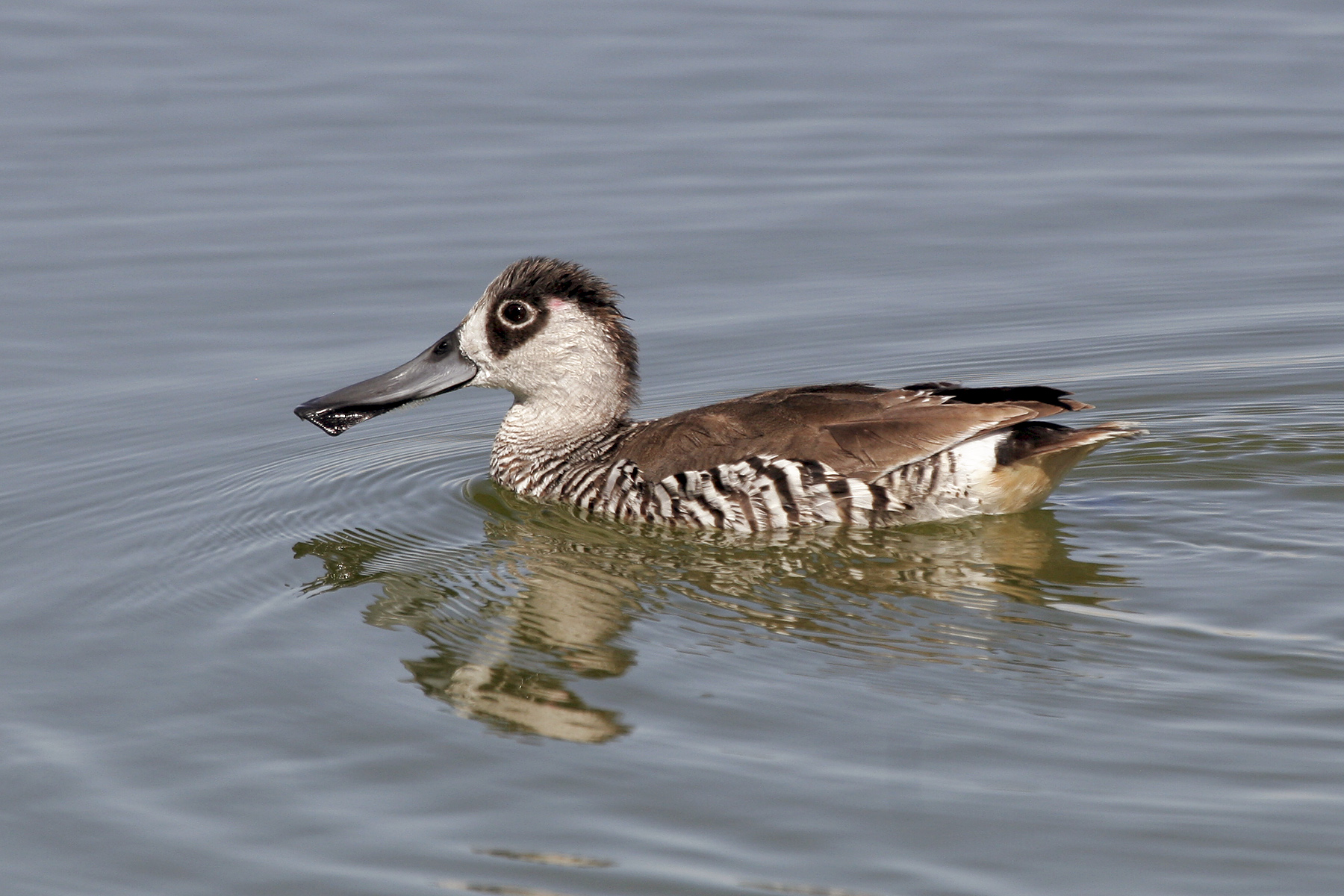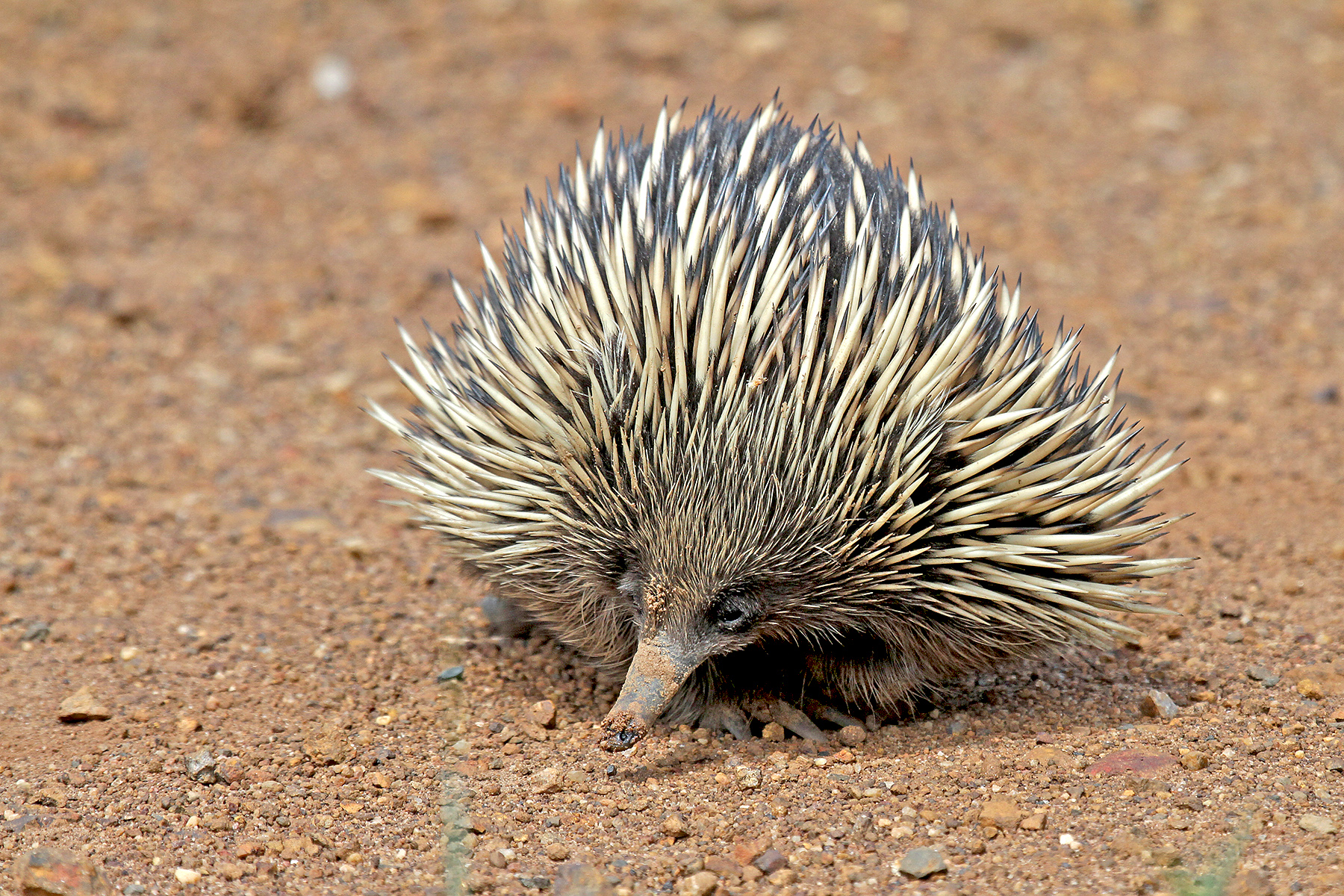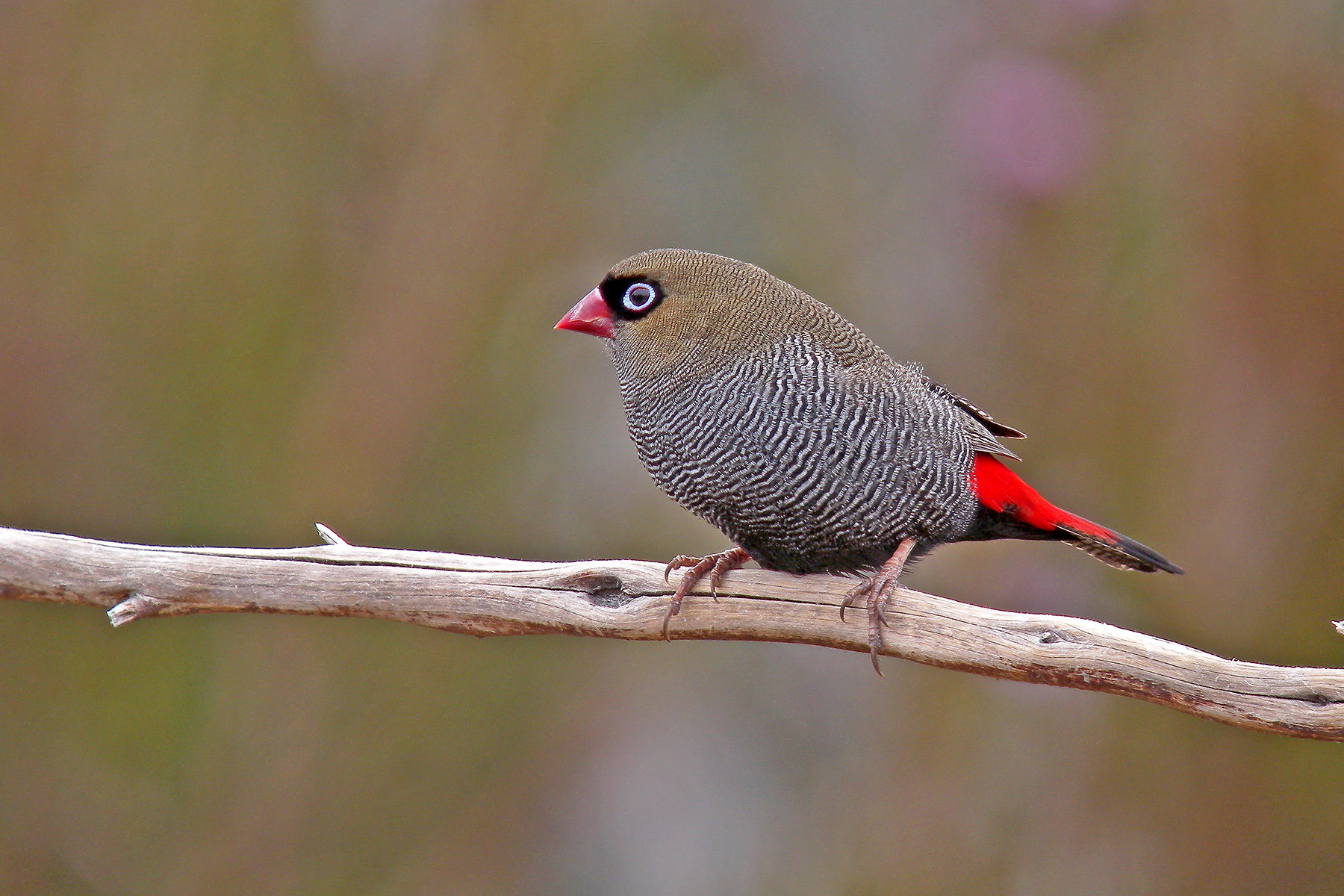SOUTHERN AUSTRALIA & TASMANIA BIRDING TOUR: DETAILED ITINERARY
Southern Australia & Tasmania: Day 1 Our tour begins late this morning at the Holiday Inn near Melbourne Tullamarine Airport. From there, we will drive to the southeastern part of the Melbourne conurbation for a two nights stay.
We will arrive in time for some initial birding this afternoon.
Southern Australia & Tasmania: Day 2 The Dandenong Ranges, part of the Great Dividing Range, extend right to the eastern edge of Melbourne. This morning we will visit an area of wet sclerophyll forest, where the gullies are lined with enormous tree ferns, and also a small wetland. The Dandenongs are one of the best places in Australia for seeing the remarkable Superb Lyrebird, probably the most accomplished mimic in the avian world. When the males sing, they include the songs and calls of many other forest species and even accurately mimic camera shutters and motor drives! One can only tell that it is a lyrebird imitating these other birds and noises because the sounds tend to run into each other and they are two or three times as loud as they should be!
Other species we are likely to see in the Dandenongs include Pacific Black and Maned (or Australian Wood) Ducks, Dusky Moorhen, Eurasian Coot, the introduced Spotted Dove, Galah, the raucous Sulphur-crested Cockatoo, Rainbow Lorikeet, Australian King Parrot, Crimson and Eastern Rosellas, Fan-tailed Cuckoo, Shining Bronze Cuckoo, the noisy Laughing Kookaburra (a huge kingfisher), White-throated Treecreeper, Superb Fairy-wren, Spotted Pardalote, White-browed Scrubwren, Brown and Striated Thornbills, Red Wattlebird, Yellow-faced and White-naped Honeyeaters, Eastern Spinebill, Eastern Yellow Robin, Grey Shrike-thrush, Common Golden Whistler, Grey Fantail, Magpie-lark, Black-faced Cuckooshrike, Australian Magpie, Pied Currawong, Australian and Little Ravens (our first of the confusingly similar Australian corvids!), Silvereye, the secretive Bassian (or Australian Ground) Thrush, and the introduced Common Blackbird and Common Myna. We should also see one or two of the more uncommon species such as the elusive Red-browed Treecreeper, the skulking Pilotbird, Lewin’s Honeyeater or the delightful Rose Robin.
Later in the day, we will drive southwards to Phillip Island, where we will be wanting to see the rare localized Cape Barren Goose in particular. This interesting species, which is not a true goose at all, breeds on nearby islands in the Bass Strait and visits the adjacent mainland and Phillip Island to feed on the improved pasture of neighbouring farms – a habit that does not endear them to the local community. Other new birds at Philip Island are likely to include Australian Pelican, Australasian Gannet, Pied, Little Pied, Great and Little Black Cormorants, White-faced Heron, Australian White and Straw-necked Ibises, Royal Spoonbill, Black Swan, Australasian Shelduck, Grey and Chestnut Teals, Swamp Harrier, Sooty Oystercatcher, Masked Lapwing, Silver and Pacific Gulls, Greater Crested Tern, Brush Wattlebird, New Holland Honeyeater, Welcome Swallow and the introduced Eurasian Skylark and European Goldfinch.
We shall also visit the famous beach where there is a breeding colony of Little Penguins. After dusk, the penguins themselves begin to arrive (and in the background will be large numbers of Short-tailed Shearwaters heading for their own colony). Part of the beach is floodlit and the penguins can be observed as they emerge from the sea and make their way to their burrows, often in waddling groups. The birds are now so accustomed to the many visitors here that they will walk right past you! The whole thing amounts to an appealing if rather surreal experience, as there are not many birding venues in Western countries where announcements are even made in Japanese and Chinese!
Southern Australia & Tasmania: Day 3 We will have another chance to look for Superb Lyrebird if need be this morning before heading southeast from Melbourne to Geelong for an overnight stay.
We will visit several sites in the Queenscliffe and Geelong areas, where we will be looking in particular for the rare Freckled Duck, Latham’s Snipe and the localized Fairy Tern, and where other new species may include Great Crested, Hoary-headed and Australasian Grebes, Great and Little Egrets, the prehistoric-looking Musk Duck, Blue-billed Duck, Eastern Curlew, Common Greenshank, Marsh, Sharp-tailed and Curlew Sandpipers, Red-necked Stint, White-headed Stilt, Red-necked Avocet, Whiskered and Caspian Terns, Singing Honeyeater, White-fronted Chat, Willie Wagtail, Grey Butcherbird, and the introduced European Greenfinch. We shall also look offshore, and if conditions are favourable, we are likely to see Shy Albatrosses passing with the numerous Short-tailed Shearwaters.
Southern Australia & Tasmania: Day 4 From Geelong we will head southwestwards along the Great Ocean Road, which was originally constructed by convict labour, to Port Campbell where we will spend the night.
This scenically attractive route passes the famous ‘Twelve Apostles’; large rock structures towering out of the ocean, one of which collapsed comparatively recently!
We will make a stop at Cape Otway, where the delightful Koala is quite common in the mature eucalypt forests and where we may also find the attractive Gang-gang Cockatoo. In addition, Pied Oystercatcher is likely along the coastline.
Southern Australia & Tasmania: Day 5 Our main quarry around Port Campbell will be the shy and retiring Rufous Bristlebird, which creeps around on the ground, usually staying well concealed in dense coastal scrub and thickets. The bristlebirds have now been placed in their own family, Dasyornithidae, greatly adding to their importance for many birders.
The coastal cliffs still hold a few pairs of Peregrine Falcons, while Blue-winged Parrots can sometimes be found feeding on seeds in the coastal heathland and we should also encounter the huge Yellow-tailed Black-Cockatoo and White-eared Honeyeater. Offshore, we will keep a lookout for Black-faced Cormorants, and we may even see a Little Penguin along the coast.
From Port Campbell, we will drive northwards to Heathcote for an overnight stay.
We will stop en route at Clunes State Forest where the eucalypt woodland has prolific mistletoe and harbours the uncommon Painted Honeyeater as well as Brown Goshawk, Striated Pardalote, Weebill, Yellow-rumped Thornbill, and Yellow-tufted, Fuscous, White-plumed, Black-chinned and Brown-headed Honeyeaters.
Southern Australia & Tasmania: Day 6 This morning we shall first look for the impressive Powerful Owl along a watercourse and then for the uncommon Speckled Warbler in an area of water-worn sandstone hills and dry eucalyptus woodland. We should also find Buff-rumped Thornbill, Scarlet Robin, the smart Diamond Firetail and, if luck is on our side, the rare Square-tailed Kite.
During the afternoon we will continue northwards to Deniliquin, in southern New South Wales, for a two nights stay.
We will pass through largely agricultural areas where we are likely to encounter a number of common species along the roadsides, including Australian (or Black-shouldered) and Whistling Kites, Nankeen (or Australian) Kestrel, Crested Pigeon and the restricted-range Long-billed Corella, while copses of eucalypts may hold Musk Lorikeet.
Southern Australia & Tasmania: Day 7 Deniliquin lies amidst the grasslands that extend for vast distances to the north of the Murray River. Here, on the Murray River Floodplain, we shall see huge Eastern Grey and Red Kangaroos and countless sheep whilst searching for the local birds. Some extensive marshes occur in this area, whilst river red gums line the major tributaries of the Murray.
The star attraction of the area is the Plains-wanderer. This curious, buttonquail-like bird is in a family of its own and is now extremely rare and endangered. In this area it is still holding its own and by going out at night (the birds are so shy that they are nearly impossible to see in daylight hours) in four-wheel-drive vehicles, equipped with spotlights, we have an excellent chance of finding one.
In addition to Plains-wanderer, we may well see the gigantic but awkward-looking Emu, Australian Darter, Pacific (or White-necked) Heron, Black Kite, the impressive Wedge-tailed Eagle, Spotted Harrier, Brown Falcon, Stubble Quail, Little Button-quail, the shy and somewhat strange-looking Black-tailed Native-hen, Banded Lapwing, Peaceful Dove, the localized and aptly-named Superb Parrot, Yellow Rosella, the nomadic Cockatiel, the lovely Red-rumped Parrot, Horsfield’s Bronze Cuckoo, the strange Australian Owlet-Nightjar, the cryptic Tawny Frogmouth, Sacred Kingfisher, the nuthatch-like Varied Sittella, Brown Treecreeper, the attractive White-winged Fairy-wren, Western Gerygone, Yellow and Buff-rumped Thornbills, Spiny-cheeked Honeyeater, Noisy Miner, the gorgeous Red-capped Robin, Jacky Winter (an interestingly-named Australian flycatcher), the bark-stripping Crested Shriketit (this form being renamed Eastern Shriketit when the complex is split), Rufous Whistler, Restless Flycatcher, White-winged Triller, Dusky Woodswallow, Pied Butcherbird, the charismatic White-winged Chough, Tree and Fairy Martins, the attractive White-backed Swallow, Australasian Pipit, the interesting Rufous and Brown Songlarks (not larks at all, but aberrant warblers!), Australian Reed Warbler, Golden-headed Cisticola, Little Grassbird, Red-browed Finch and Mistletoebird.
If we are lucky we will also see one or two of the more tricky or nomadic species of the area, which include Australasian Bittern, Red-chested Buttonquail, Baillon’s, Spotless and Australian Crakes, Australian Painted-snipe and Ground Cuckooshrike.
Southern Australia & Tasmania: Day 8 After some final birding around Deniliquin we will head westwards to the small town of Nhill in the Mallee country of northwestern Victoria, looking out for colourful Blue Bonnets along the roadsides. We will overnight nearby at Little Desert Nature Lodge, owned by ‘Whimpey’ Reichelt.
We shall stop en route to check some lakes where we will be on the lookout for Yellow-billed Spoonbill, Pink-eared Duck, Hardhead, the powerful White-bellied Sea Eagle, Red-capped and Black-fronted Plovers, and the erratic and uncommon Banded Stilt (which is regularly to be found in this area). With luck, we will also come across Australasian Shoveler.
Southern Australia & Tasmania: Day 9 ‘Whimpey’ is something of a local institution and was far-sighted enough to see, many years ago, that mallee heath was vanishing from northwestern Victoria at an alarming rate. He purchased several large tracts and gradually these are being fenced off, to prevent ingress by introduced predators. As a result, the strange Malleefowl is thriving in these areas, unlike most parts of its range where it is in precipitous decline. We shall visit one of these tracts this morning and should get wonderful views of Malleefowl at an incubation mound. We should also find the uncommon and localized Purple-gaped Honeyeater and have our first chance to look for other mallee species such as Shy Heathwren, Southern Scrub-robin, and Yellow-plumed and Tawny-crowned Honeyeaters.
Afterwards, we will drive to Ouyen for a two nights stay.
Southern Australia & Tasmania: Day 10 Today we will explore extensive area of mallee at Hattah-Kulkyne. Mallee consists of dense, shrubby vegetation on sandy soils, and at this season many species will be in bloom. Stunted growths of eucalypts amidst the large sandhills, red river gums lining the edges of dried-up watercourses and areas of open grassland add diversity to this attractive area.
Here, in the unwelcoming spinifex clumps, we have a good chance of finding the shy Mallee Emu-wren, and equally retiring Striated Grasswren, whilst nearby, species such as Australian Ringneck (the form here is sometimes split as Mallee Ringneck), Mulga Parrot and perhaps Crested Bellbird can be found. We will search a nearby plain for the localized Chestnut-crowned Babbler and Southern Whiteface, and at the edge of the Hattah Lakes and the adjacent picnic area we may well find, Yellow Rosella, the superb Regent Parrot, Yellow-throated Miner, Blue-faced Honeyeater, the strange Apostlebird and perhaps the superb Pink (or Major Mitchell’s) Cockatoo. White-browed and Masked Woodswallows may also be present (though these species are nomadic and somewhat unpredictable in their appearance).
More widespread species we may well find in the mallee country include Little Eagle, Collared Sparrowhawk, Common Bronzewing, Little Corella, Rainbow Bee-eater, the exquisite Splendid Fairy-wren, Inland and Chestnut-rumped Thornbills, White-browed Babbler, Hooded Robin, Grey Currawong and, if we are reasonably fortunate, the beautiful Chestnut Quail-thrush.
Southern Australia & Tasmania: Day 11 After some final birding in the Hattah-Kulkyne, we will make our way to Waikerie, in South Australia, for a two nights stay.
We will make a stop en route at a small mallee reserve where we have an excellent chance of finding the localized White-browed Treecreeper.
Southern Australia & Tasmania: Day 12 We will spend our time today searching the excellent Gluepot reserve for some of the more difficult to find mallee specialties. Since European settlement, vast tracks of mallee have been cleared for farming. The Gluepot reserve is one of the most important areas of almost untouched mallee left in Australia. This extensive area of eucalypts is interspersed with areas of both spinifex and heathland, the latter predominantly made up of Banksia, she-oak and tea-tree. At this time of year, wildflowers such as everlasting, orchids and others are often prominent, making it a perfect setting for birding.
In particular, we shall be searching for Gilbert’s Whistler and the more elusive Red-lored Whistler (the latter prefers areas of low, patchy mallee on sandhills), and also the very rare and endangered Black-eared Miner. If we are lucky we will find one or two of the more elusive specialities, such as the scarce Black-eared Cuckoo or the nomadic White-fronted Honeyeater. There is even a slim but real chance of coming across the uncommon and nomadic Scarlet-chested Parrot at Gluepot, whilst we will also have another chance to pick up the more difficult mallee specialities such as Chestnut Quail-thrush, Striated Grasswren and Southern Scrub-robin.
Southern Australia & Tasmania: Day 13 After some final birding in the Waikerie area, where we will check an excellent wetland for Freckled Duck if we have not yet seen any, we will head north to Wilpena Pound in the Flinders Ranges for an overnight stay. We will make a stop to look for the elusive Redthroat on the way.
Southern Australia & Tasmania: Day 14 This morning we will explore the beautiful Flinders Ranges. This outstanding area of natural beauty, with rugged escarpments that rise dramatically out of the wide-open plains, deep gorges and watercourses lined with tall river red gums, is rich in birdlife. Here we shall be especially keen to find Short-tailed Grasswren (sometimes split from Striated), and we will also be on the lookout for Australian Hobby, Elegant Parrot, and the scarce Grey-fronted Honeyeater. Many of the Australian Ringnecks hear appear somewhat intermediate between the ‘Mallee’ and ‘Port Lincoln’ forms. Other birds in the area include Southern Boobook, Red-backed Kingfisher and Variegated Fairy-wren.
We are also likely to encounter the beautiful but localized Yellow-footed Rock Wallaby.
Later as we head north, our Outback adventure will begin as we head north for a two nights stay in the small motel at Lyndhurst, followed by a two nights stay at Mungerranie.
Southern Australia & Tasmania: Days 15-17 During these days we will travel through some of the most remote country in Australia, travelling along little-used roads and visiting wild places that harbour many of Australia’s least known and most sought-after specialities. This was once an area that could only be entered by well-equipped 4×4 safaris, but huge improvements to the Outback roads have made access far less difficult. Travelling north to Lyndhurst, we reach the Strzelecki Track, where we will explore the southern portion. The track runs through typical cattle station country, over-stocked and over-grazed, but nonetheless home to two of Australia’s rarest birds: the elusive Chestnut-breasted Whiteface and the uncommon Thick-billed Grasswren, both of which we shall concentrate on finding. Other species in this area include Diamond Dove, the nomadic Budgerigar, Chirruping Wedgebill, Cinnamon Quail-thrush, Rufous Fieldwren, Little Crow and Zebra Finch. We will explore a little way along the track, and here, if conditions are favourable, we will find Pied Honeyeater and even the strange and largely nocturnal Letter-winged Kite!
From Lyndhurst, we continue to Marree, where we will turn northwards onto the famous Birdsville Track en route to the remote outpost of Mungerranie. Although this is wide open semi-desert country, a mixture of almost bare flats and brushland, it is an outstanding area for birds and we shall cover the area thoroughly in the hope of finding several rare and seldom-seen species.
This is the most outstanding area for birds of prey in Australia and many of the more difficult to find species breed here. In particular, we shall hope to see the attractive though uncommon Black-breasted Buzzard, the scarce Black Falcon and even the rare and sought-after Grey Falcon.
Between Marree and Goyder Lagoon, the flat, windswept plains comprise an interesting variety of arid habitats. Around the edge of the dried-out clay pans grow a profusion of low succulents and saltbush; this is a particularly good habitat to search for the elusive Ground Cuckooshrike. The prime speciality of this habitat, however, is the strikingly-plumaged Orange Chat, and with a little persistence, we should be able to enjoy good views of this gem amongst Outback Australian birds.
Another closely related species, which is also found in the area, is the uncommon and localized Gibberbird (or Gibber Chat), which prefers large, open areas of wind-swept gibber with a sparse covering of dwarf bushes. Gibber is an Aboriginal word meaning stone. Here, harsh desert conditions of extreme heat and cold, prolonged drought and occasional flash floods have removed the soil, leaving only the gleaming gibber-stones to cover the plains. Polished by the wind-blown sand, these stones, large and small, rounded or angular in shape, represent all that remains of the ancient land surface! Individual stones may be red, brown-black or translucent quartz, but when seen against the light they all glitter like mirrors scattered across the plains.
Another species we shall be searching for is the little known Eyrean Grasswren. First discovered in 1874, it was not seen again until 1961 and is one of Australia’s least known birds. It inhabits tall canegrass on the larger, more stable sand dunes and with a little persistence, we should be able to find this rare desert species. If there have been good rains in this area we could also be rewarded with fine views of the beautiful Crimson Chat. One bird we will have to search diligently for is the extremely well-camouflaged Inland Dotterel, but this beautiful plover is well worth the effort, and also of great interest is the remarkably long-legged Australian Pratincole. We will also be on the lookout for the rare and erratic Flock Bronzewing, which can sometimes be seen coming down to drink at small dams.
At Goyder Lagoon itself, we will search the lignum swamp for the striking and very rare Grey Grasswren. With persistence, we should obtain good views. Another rarity that can only sometimes be found here is the attractive Yellow Chat. If the lagoon has water in it, various wetland species, including Glossy Ibis, Red-kneed Dotterel and Gull-billed Tern, may be present. As we gaze upwards in the evenings at an immense starlit sky, in which the unfamiliar southern constellations seem almost close enough to touch, we shall appreciate why the Aborigines came to feel that every part of this vast, ancient land was imbued with deep spiritual significance.
Southern Australia & Tasmania: Day 18 After some final birding along the Birdsville Track, we will make our way back south, taking in the wide-open, remote and uninhabited landscapes for one last time, before arriving in Port Augusta for a two nights stay.
We will rapidly come to the conclusion, if we have not done so already, that we have had a remarkable experience during the last few days, both in terms of birds and in terms of scenery, adventure and wilderness travel!
Southern Australia & Tasmania: Day 19 This morning we will explore the area to the southwest of Port Augusta, where we will be wanting to see the eastern form of the Western Grasswren.
Around Port Augusta itself, Purple-crowned Lorikeet is relatively common, and in the attractive Arid Lands Botanic Gardens, we may well find tame Chirruping Wedgebills (this species is often shy and hard to see elsewhere), while the flowering shrubs attract a variety of honeyeaters, giving us a second chance to find the nomadic White-fronted Honeyeater and perhaps even the uncommon Black Honeyeater.
We will also explore some wetlands near to Port Augusta where we will have another chance to look for the nomadic Banded Stilt, which can often be found in amongst flocks of Red-necked Avocets.
Southern Australia & Tasmania: Day 20 After some final birding around Port Augusta we will travel southwards to the Adelaide area for an overnight stay, stopping along the way to look for the uncommon and localized Slender-billed Thornbill.
Southern Australia & Tasmania: Day 21 Early this morning we will encounter the ‘Adelaide’ form of the Crimson Rosella before we head for the airport.
We take a flight across the Bass Strait to Hobart, the capital of Tasmania and a beautiful modern city on a wide blue sound, surrounded by green mountains. Nowadays Tasmania attracts increasing numbers of visitors for whom natural beauty is the prime attraction, but less than 200 years ago Englishmen and Englishwomen viewed a visit to Tasmania in a very different light, for here was the infamous penal settlement of Port Arthur.
From Hobart, we will make our way to Bruny Island for a two nights stay. Lovely Bruny Island will surely be a major highlight of our visit to Tasmania. As we take the ferry across to the island we will be on the lookout for Black-faced Cormorant and Kelp Gull. Once on land, our attention will be focussed on Tasmania’s rarest endemic and a parrot of restricted distribution, although all of Tasmania’s endemic birds can be found here.
Southern Australia & Tasmania: Day 22 Bruny Island still has a number of colonies of Forty-spotted Pardalotes, one of Australia’s most endangered species, and with persistence, we should see this delightful little bird. The localized Swift Parrot, a summer visitor to Tasmania, is not uncommon in the forests, where endemic residents include Green Rosella, Tasmanian Scrubwren, Tasmanian Thornbill, Yellow Wattlebird, Yellow-throated and Black-headed Honeyeaters, and also Strong-billed Honeyeater, a declining species that clings to the sides of tall eucalypts, tearing off strips of bark in its search for insects and spiders. Dusky Robins perch on fence posts and Scrubtits (a declining species that is becoming harder to find) try to disguise themselves amongst small flocks of scrubwrens. Tasmanian Native-hen is quite common in more open, marshy areas, while the fierce-looking Black Currawong tends to favour the higher altitude forests.
We should also see Little Penguin, Short-tailed Shearwater, Brush Bronzewing, the huge Yellow-tailed Black-Cockatoo, Crescent Honeyeater, the stunning Pink Robin (that colour has to be seen to be believed!), Flame Robin (yet another of Australia’s most beautiful birds), Forest Raven and perhaps Satin Flycatcher. We will also closely examine the island’s sandy beaches for the uncommon but very smart Hooded Plover.
Bruny Island is also a great place for mammals; Red-necked Wallaby is common, and we also have a very good chance of seeing the strange Short-beaked Echidna (or Spiny Anteater). At night that delightful little ‘marsupial cat’ the Eastern Quoll is quite easy to locate and there is a chance for Long-tailed Potoroo and Tasmanian Bettong.
Southern Australia & Tasmania: Day 23 After spending much of the day on Bruny Island we will return to Hobart for an overnight stay.
Around Hobart, we have an excellent chance of watching the strange Duck-billed Platypus and we will also go out to look for the large Tasmanian form of the Masked Owl, which may be a distinct species. We have a good chance of hearing one, but a bit of luck will be needed if we are to see one.
Southern Australia & Tasmania: Day 24 Our tour ends this morning at Hobart.
SOUTHWEST TASMANIA EXTENSION
Southwest Tasmania Extension: Day 1 Today there is a special outing to see the Critically Endangered and nowadays world-famous Orange-bellied Parrot. The return charter flight to the remote far southwest of Tasmania is seriously expensive but worth every penny in our view. The spectacularly scenic flight passes over vast swathes of virgin forest, followed by a landing at a small airstrip which is right in the heart of the remote breeding grounds of the Orange-bellied Parrot.
With a breeding population of only around 50 individuals, this is one of the rarest birds in the world. The whole population breeds in southwestern Tasmania, with the majority of birds migrating to coastal saltmarshes in Victoria and South Australia to spend the Austral winter. Orange-bellied Parrots are ground feeders, feeding exclusively on seeds and fruit from salt-tolerant plants. There should be some intimate views of them during the visit and you will feel very privileged to have seen such a rare and beautiful bird in such a remote setting.
While in the area, there is also a very good chance of seeing the secretive Ground Parrot, Olive Whistler, the pretty little Southern Emu-wren, Striated Fieldwren and the localized Beautiful Firetail.
After the return to Hobart, stay overnight.
Southwest Tasmania Extension: Day 2 The extension ends this morning at Hobart.


















































































